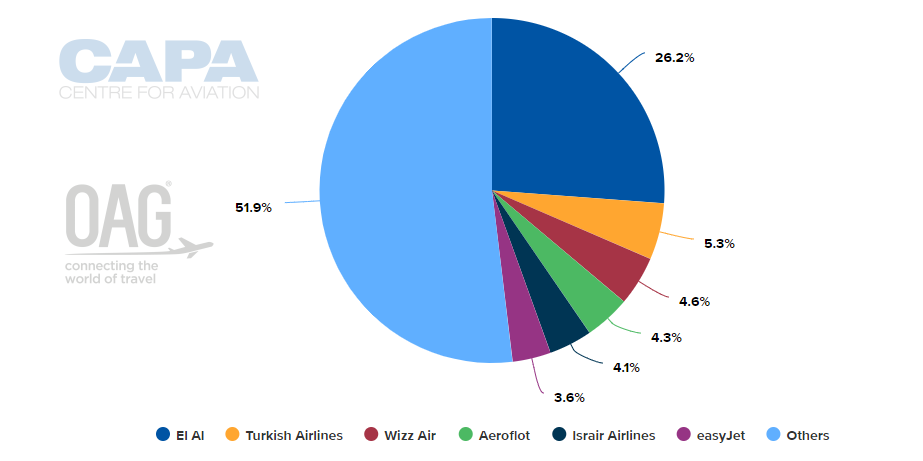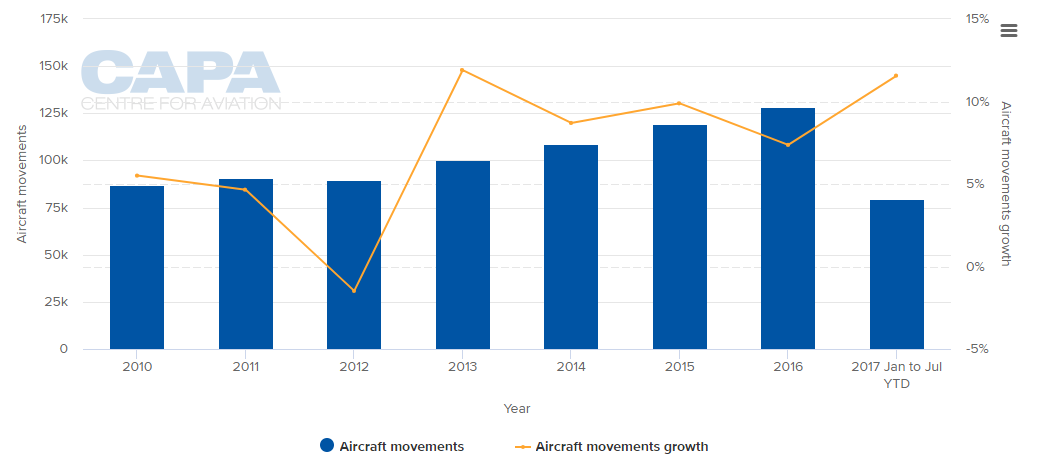Summary:
- Another offshore airport proposal has been revealed, this time in Israel, where land-use prescribes against an onshore one;
- Once again Benelux-based companies are behind it, namely elgium's Dredging Environmental and Marine Engineering NV and Luxembourg's Jan de Nul Group;
- Tel Aviv's airport capacity is already inadequate and additional airport capacity such as an offshore project could take up to 15 years to come to fruition;
- A previous proposal was rejected in favour of a military base conversion which is now considered unsuitable for Tel Aviv's market needs.
Others have been proposed, for example, in the North Sea as a replacement for Amsterdam Schiphol Airport, where noise and other environmental factors are a major issue ("at sea, no-one can hear a jet engine scream?"). Also in the River Thames estuary in London as a replacement for Heathrow. None of those European proposals have come to much yet, nor have any of the occasional proposals for similar infrastructure in North America.
At the end of May 2018, Israel's head of the national economic council Avi Simhon said Belgium's Dredging Environmental and Marine Engineering NV and Luxembourg's Jan de Nul Group had sent representatives to discuss the development of a USD10 billion offshore airport project. The plans have apparently been under consideration for many years, and now, according to Mr Simhon, "We can't sit around and do nothing while (Tel Aviv's) Ben Gurion reaches overcapacity". The project is slated to take 10 to 15 years to complete.
This is not an entirely new idea for Israel. At the turn of the century the government approved schemes to build two offshore islands, something Prime Minister Netanyahu claims he first dreamed up the in 1996. Separately, a scheme was put forward for such an island to house a Palestinian port off the Gaza Strip.
The Low Countries are a frequent source of schemes such as these. It was the Netherlands' Royal HaskoningDHV which came up with the idea for the Amsterdam Schiphol replacement (which could also have been a replacement for Brussels International Airport). The Dutch have a particular expertise in engineering on and in very low ground and the sea and there is a lack of much spare land to build on there, a country that is heavily populated but which also has a thriving agricultural sector.
There are similar issues in Israel, where there is a scarcity of land for infrastructure, especially in the centre of the country. There are plenty of airfields in Israel but only one major international airport (Ben Gurion). The under-construction Eilat Timna Airport in the south of the country, and now set to open in Oct-2018, is intended partly as a reliever airport for Tel Aviv and partly as an inbound tourist airport.
Israel's economy is growing quickly though, while the population consistently increases its propensity to travel and the Eilat airport will not be able to tackle that issue on its own. Proposals have been made for a second Tel Aviv international airport at a variety of locations including Northern Israel's Jezreel Valley, a preferred site being the Ramat David Air Base, and at Nevatim in Southern Israel.
Indeed, Ramat has already been "selected" in principle over Nevatim (2014) - on the basis that it has the best infrastructure already in place - when a previous proposal for an artificial island airport was rejected! But Ramat is the only air force base in Northern Israel and would have to revert to the military very quickly in the event of an emergency. The question of funding it also remains unresolved.
Ben Gurion airport is being expanded. According to the CAPA Airport Construction Database, at the end of 2017 the Israel Airports Authority said it would undertake an ILS1.4 billion (USD409.8 million) upgrade and expansion project at that airport in order to support significant expected increases in passenger traffic over the next five years.
Recently, in Mar-2018, a new wing was opened in Terminal 3, while a new runway is also in the offing. However, the airport is struggling to keep pace with demand, which has spiralled since the adoption of an Open Skies agreement with the EU in 2013 which let in low cost carriers. Passenger numbers increased from 14.2 million in that year to an anticipated 24 million in 2018. The capacity was only around 16 million before the recent pier addition.
CHART - While El Al remains the largest carrier the LCCs are slowly increasing their seat market share at Tel Aviv (top) and helping to boost annual traffic levels (bottom)
 Source: CAPA -Centre for Aiation, OAG and ACI (data: w/c 28-May-2018)
Source: CAPA -Centre for Aiation, OAG and ACI (data: w/c 28-May-2018)